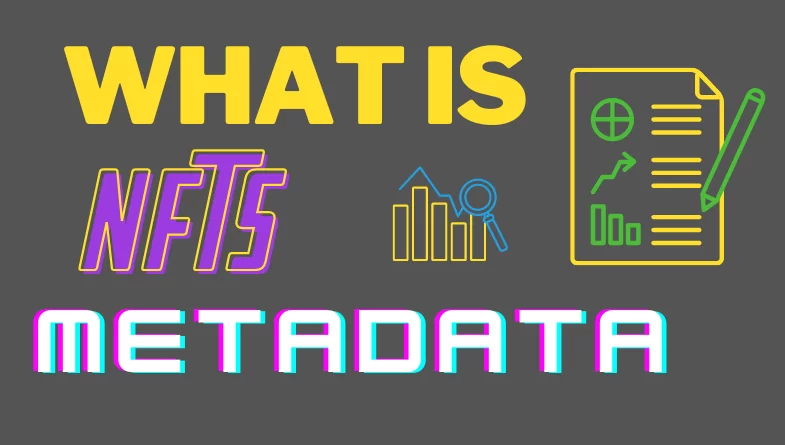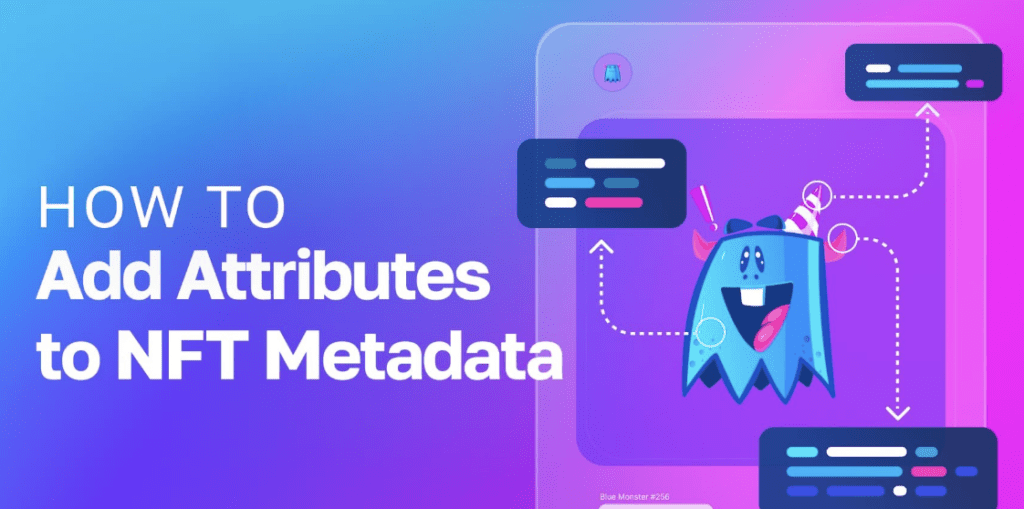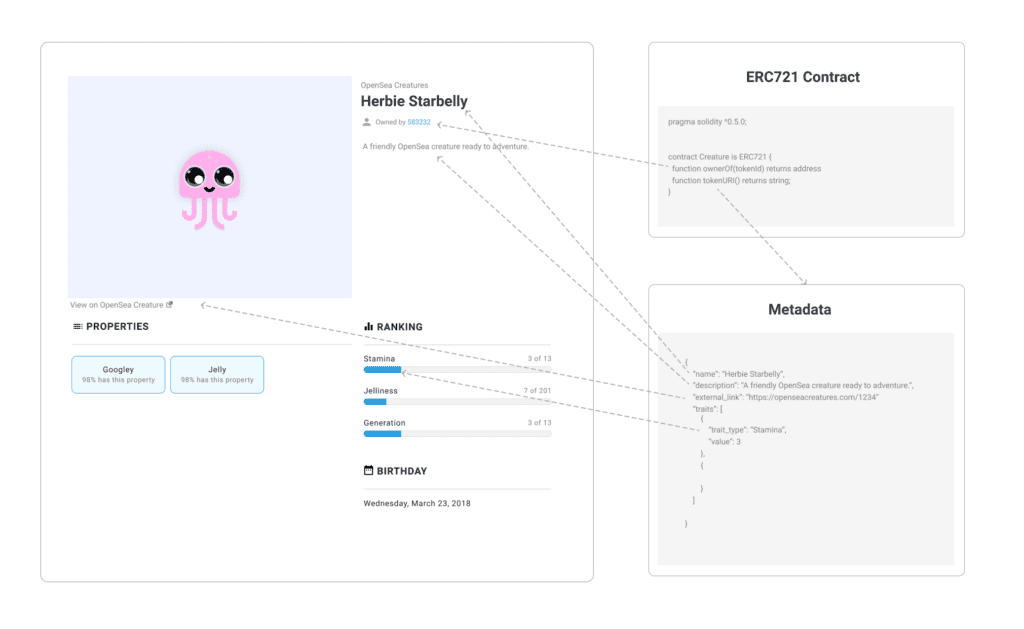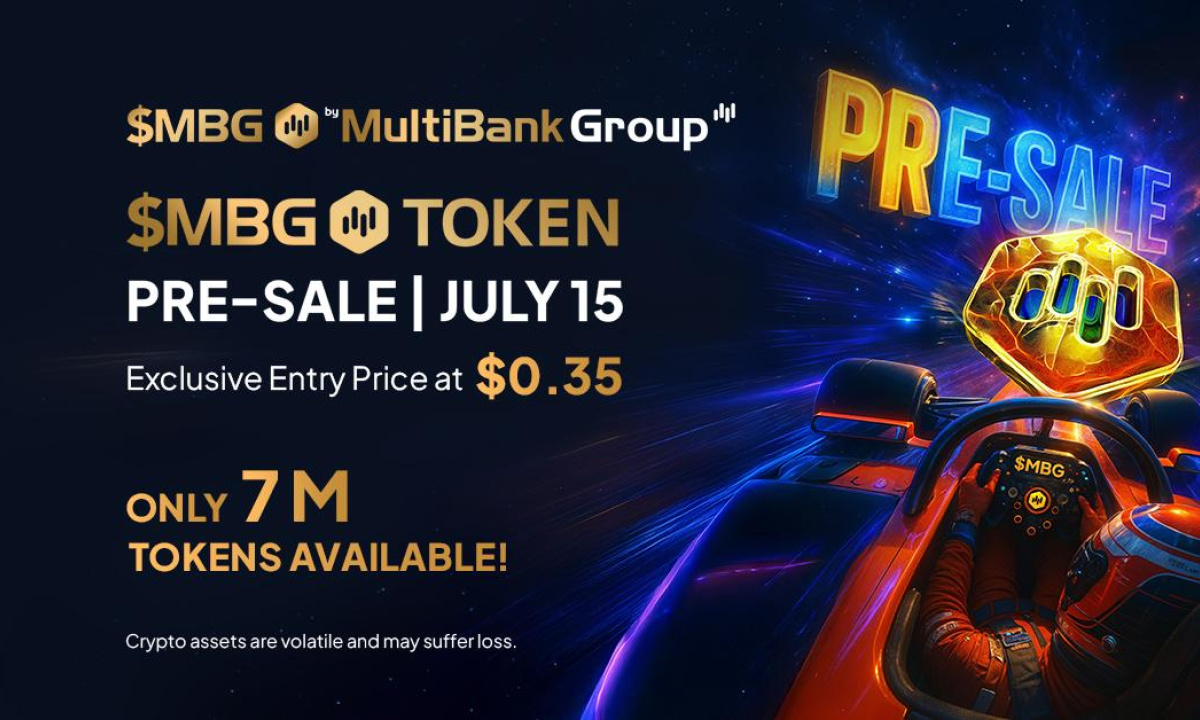NFT Metadata are unique digital representations of blockchain-based tangible or intangible objects that cannot be divided into smaller parts. Instead, structured metadata related to actual or virtual things is represented by NFTs.

These tokens serve as distinct identifiers that advance the interoperable commercialization of physical or digital items, according to their proponents.
In 2012 or 2013, hashes of files or other data were added to the Bitcoin blockchain to demonstrate their existence or legitimacy at a particular moment. This development led to the creation of “Colored Coins,” which are uniquely identified tokens recognized by adding metadata to Bitcoin transactions.
So, what exactly is metadata and how is it generated? Metadata is essentially data that describes other data. For example, the metadata of an NFT could include information such as the artist, date of creation, and other related details. This metadata is generated by the creator of the NFT and is stored within the blockchain.
Retrieving metadata of an NFT from the contract can be done by utilizing the contract’s ABI (Application Binary Interface). Reading NFT files is done by decoding the metadata stored within the blockchain. Viewing the metadata of any NFT is possible by simply examining the NFT’s smart contract.
NFTs are a unique and innovative way to represent tangible or intangible objects on the blockchain. By utilizing structured metadata and distinct identifiers, NFTs enable the interoperable commercialization of physical or digital items.
What is NFT metadata?
NFT metadata is the information that accompanies a non-fungible token (NFT) and provides details about the NFT’s properties, attributes, and provenance. This metadata can include things like the name and description of the NFT, the artist or creator who made it, the date it was created, the file type and size, and any other relevant information that the NFT owner or creator wants to include.
In addition to providing important information about the NFT, the metadata can also help establish its authenticity and value. By including detailed information about the NFT’s history and provenance, the metadata can help ensure that the NFT is a genuine and unique asset, rather than a copy or replica.
NFT metadata is typically stored on the blockchain or other decentralized storage systems, and can be accessed and verified by anyone who owns the NFT or has access to the blockchain. This makes it possible for NFT owners and collectors to track the history and ownership of their assets, and to establish their provenance and authenticity.
How does NFT metadata work?
NFT metadata works by providing additional information about a non-fungible token (NFT) and storing that information in a standardized format that can be read and interpreted by NFT marketplaces, wallets, and other applications. This metadata typically includes information about the NFT’s attributes, such as its name, description, image or video file, and any other relevant data that the creator or owner wants to include.
NFT metadata is usually stored on the blockchain or other decentralized storage systems, alongside the NFT itself. This ensures that the metadata is immutable and tamper-proof, meaning that it cannot be altered or deleted once it has been added to the blockchain.
When an NFT is created, its metadata is usually added to the blockchain as part of the creation process. This metadata can then be accessed and read by anyone who has access to the blockchain, including NFT marketplaces and wallets.
NFT marketplaces and other applications can use the metadata to display information about the NFT to potential buyers and collectors. For example, a marketplace might display the NFT’s name, description, and image alongside its price and other details. This can help potential buyers make informed decisions about whether to purchase the NFT.
How can you view the metadata of any NFT?

When an NFT project is made available for minting and you purchase an NFT, a random number generator will assign a unique set of characteristics to it. These characteristics are then stored in the metadata, which is immutably recorded on the blockchain. The metadata contains important details about the NFT, such as its meaning, current owner, and transactional activity history.
To access an NFT’s metadata, confirm its ownership, and trace its transaction history, you can use an NFT tracking and verification service. These services allow you to verify that the token ID and contract address are connected to the legitimate owner of the content using a marketplace database. By selecting a service that complies with NFT’s coding standard, you can use one of the many NFT verification tools available to search for the metadata you need.
One such tool is Etherscan, which is an Ethereum blockchain explorer that allows users to verify transaction histories, wallet addresses, metadata, smart contracts, and other on-chain data. With Etherscan, you can easily locate and confirm the metadata of your NFT. Similarly, if you’re using the BNB Chain network, you can access all the NFT metadata you require by using a blockchain explorer like BscScan.
While the process of generating NFT metadata may seem complex, it is crucial to ensure the authenticity and ownership of an NFT. By using an NFT tracking and verification service and a compliant NFT verification tool, you can easily access the metadata of your NFT and verify its ownership and transaction history.
To view the metadata of an NFT, you can usually access it through the NFT marketplace or wallet that you are using. Here are the general steps you can follow:
- Open the NFT marketplace or wallet where you have the NFT stored.
- Navigate to the NFT you want to view the metadata for.
- Look for an option to “View details” or “View metadata”. This may be located on the NFT’s individual page or in a dropdown menu.
- Click on the “View details” or “View metadata” option.
- The metadata should then be displayed, including information such as the NFT’s name, description, creator, date of creation, file type and size, and any other relevant information that the creator or owner has included.
Note that the specific steps for viewing NFT metadata may vary depending on the marketplace or wallet you are using, as well as the particular NFT you are looking at. However, most NFT marketplaces and wallets should provide a way to access the metadata for any NFT that you own or are interested in.
How to view your NFT on OpenSea?

To view your NFT on OpenSea, you can follow these steps:
- Go to the OpenSea website (opensea.io) and log in to your account.
- Click on your profile picture in the top right corner of the screen and select “My Profile” from the dropdown menu.
- On your profile page, click on the “Items” tab to see all of the NFTs that you own.
- Scroll through the list of NFTs until you find the one that you want to view.
- Click on the NFT’s image or name to open its individual page.
- Once you are on the NFT’s individual page, you should be able to see all of the information and metadata associated with the NFT, including its name, description, image or video file, and any other relevant information that the creator or owner has included.
- You can also see additional information about the NFT, such as its transaction history and current price, by scrolling down on the page.
Overall, viewing your NFT on OpenSea is a straightforward process that can be done in just a few clicks. By accessing the NFT’s individual page, you can see all of the relevant information and metadata associated with the NFT, as well as any additional details that might be useful for buying, selling, or trading the NFT.
Are NFTs a good investment?
The question of whether NFTs are a good investment is a complex one and ultimately depends on a number of factors, including the specific NFT in question, the current market conditions, and the individual investor’s goals and risk tolerance.
On one hand, NFTs can be seen as a potentially lucrative investment opportunity, particularly if they are rare, unique, or in high demand among collectors. Some NFTs have sold for millions of dollars, and the market for NFTs continues to grow as more people become interested in digital art and collectibles.
On the other hand, investing in NFTs can be risky, as with any investment. The value of an NFT can be volatile and subject to fluctuations based on a variety of factors, including changes in market conditions, the popularity of the artist or creator, and the overall supply and demand for NFTs.
Additionally, the long-term value of NFTs is still somewhat uncertain, as the market is still relatively new and evolving. While some NFTs may hold their value over time, others may lose value as new and more popular NFTs are created.
Overall, whether NFTs are a good investment is a subjective question that depends on a number of factors. Before investing in NFTs, it’s important to do your research, understand the risks involved, and consider your own goals and risk tolerance.
DISCLAIMER: The Information on this website is provided as general market commentary and does not constitute investment advice. We encourage you to do your own research before investing.
Join us to keep track of news: https://linktr.ee/coincu
Annie
Coincu News























